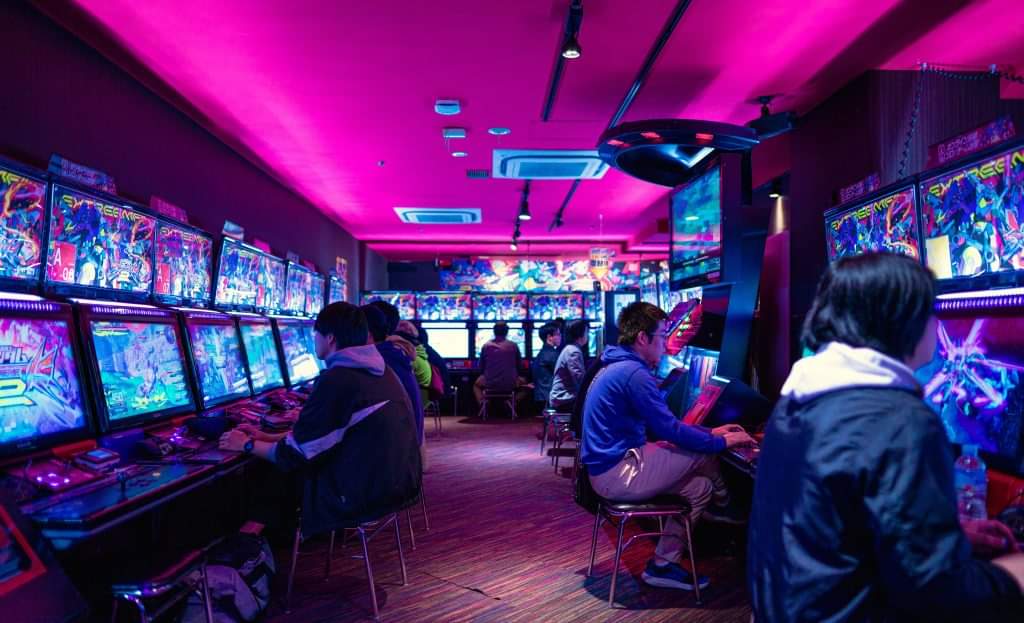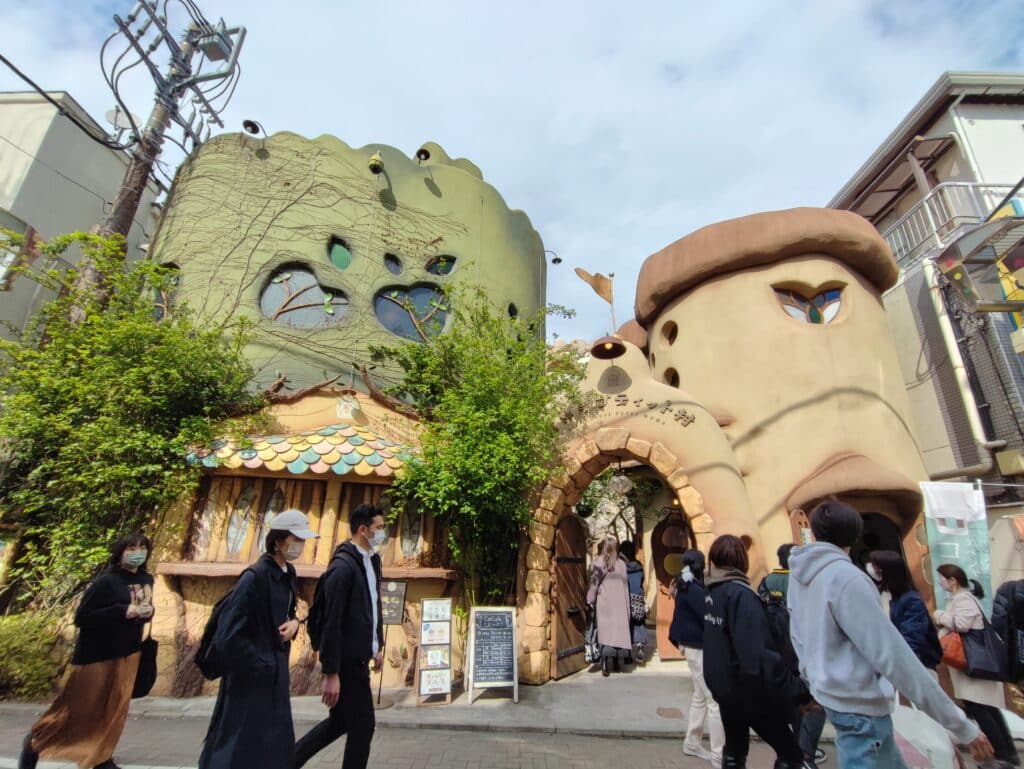Tokyo is a city of contradictions: modern, traditional, fast-paced and relaxed, all at the same time. This is the world’s most populous city, and even a lifetime would not be enough to visit it all. Hence, it is crucial to come to Japan with a good idea of what you are looking for, leaving at home the fear of missing out, and just diving into all the amazing experiences that Tokyo has to offer.
The first important thing to know about Tokyo is that this city comprises of 23 districts. Overwhelming, right?
But you have nothing to worry about as the Discova Team is here to guide you through some of these areas, covering both “mainstream” and “off the beaten path” places. Ready to embark on this journey with us?
Shibuya & Harajuku
Shibuya and Harajuku (both part of “Shibuya-ku” district) are a great combo to visit together since they are located at a walkable distance from each other.
Both are associated with teen culture but, whilst in Shibuya you can find the latest mainstream fashion trends, in Harajuku (precisely in Takeshita Street) you will catch a glimpse into the alternative fashion scene, also linked to cosplay.
Contrary to popular belief, Shibuya is not only just a shopping mecca where neon signs jut out everywhere to advertise the latest products. Opened in 2019, “Shibuya Sky” is a 229-meter-tall observation deck, located on the 47th floor of Shibuya Scramble Square Tower. The open-air deck offers a 360-degree panoramic view of Tokyo from which you can look down to the iconic 5-way crossing. Before moving towards Harajuku, don’t forget to meet Hachiko – the statue of the loyal Akita dog, still waiting for his owner just outside of Shibuya Station.

Walking through “Cat Street” – where you will find little cafes and boutiques – you will reach Harajuku area. At its heart is “Takeshita Street” with its maze of side-streets, fast-food outlets, crepe stands, cosplay and second-hand clothing stores catering to rebellious teens. Just a short walk from here is Meiji Jingu, one of the most important Shinto Shrines in Japan. It was established in 1920 to commemorate the virtue of Emperor Meiji and Empress Shoken who lay the foundation of modern Japan. Stepping into its precinct is like travelling back in time as you will promptly forget that you are in a megalopolis like Tokyo!
Last but not least, we should mention Omotesando. This is a wide sprawling avenue often dubbed “Tokyo’s Champs-Elysees”. Visitors can admire some of the most remarkable architecture in the city including the “Prada Building” designed by Swiss architecture firm Herzog and de Meuron, “One Omotesando” designed by esteemed Japanese architect Kengo Kuma, and the newest “Tokyu Plaza Harakado” set to open on the 17 April 2024, mirroring the sister building on the opposite side of the same intersection.
Asakusa
Asakusa, in “Taito-ku” district, is one of the most well-known tourist spots in Tokyo. During the Edo Period (1603 – 1867), when this district was outside the city limits, Asakusa was Tokyo’s leading entertainment district: it was the site of kabuki theaters and a large red-light district.
Nowadays, when someone thinks about Asakusa, the first thing that comes to mind is Kaminarimon “the thunder gate”. Its big red lantern signals the entrance to Nakamise Street which brings to the Sensoji, the oldest Buddhist Temple in Tokyo that hosts the Kannon.

Nakamise-dori is a street packed with about 90 stalls that sell souvenirs, tasty street food, and traditional goods. Strolling in this street is an adventure per se, with all the shop owners calling in your direction to catch your attention and make you try samples. The street’s length is about 250-metres after which you will find another gate, the Hozomon, after which you will be in front of the main building: the Kannondo Hall.
The Main Hall, Kannondo, was built by the third Tokugawa shogun, Tokugawa Iemitsu. It was destroyed in the Great Tokyo Air Raid on March 10th of 1945, and it rebuilt in 1958 with donations from followers all over Japan. Today it is designated a National Treasure.
If you want to have a different view of the area, our suggestion is to enter the Tourist Information Centre, take the elevator to the panoramic terrace from which you will see Nakamise Street and the Sensoji from above. On your right, you will also see Tokyo Skytree that, with a height of 634 meters, it is the tallest structure in Japan; the golden Asahi Building that looks like a glass of beer adjacent to the Asahi Flame, also known as Flamme d’Or. The monument of a golden fire is said to represent the burning heart of Asahi beer and was inspired by the Olympic flame.
Akihabara & Ueno
Akihabara and Ueno are two other areas that are easy to visit together, even though they are part of two different districts (Chiyoda-ku and Taito-ku), they are at a walkable distance from each other, and they will give you an insight on two different sides of the city.
Akihabara is a nerdy paradise for gamers and people who like collecting action figures or manga. It is like a pilgrimage for those interested in arcade games and electronic gadgets, with floor after floor of endless consoles and flashing lights and signals. It is also an area of counterculture where anime and manga shops prosper

Only a few minutes away on the North side on the way to Ueno, you will find Ameyokocho market. This is a lively street market that runs alongside the JR railway tracks. This is a great area for trying different type of street foods and snacks: yakitori (chicken skewers), taiyaki (Japanese fish-shaped cake), takoyaki (octopus’ dumplings) and so on!
At the end of Ameyokocho, you will reach Ueno, famous for its park and zoo.
Tokyo is home to many large parks, there are plenty of green spaces to recline on a bench with a book or enjoy a picnic. However, Ueno deserves special mention for two reasons. The first is that there are a few excellent museums in which to while away an afternoon – the Tokyo National Museum, the National Museum of Western Art, the National Science Museum, and the Tokyo Metropolitan Art Museum – are all located here. The second is that the park truly comes alive during cherry blossom season if visitors are fortunate enough to be here in spring.
Shinjuku
This area is known for housing the busiest train station in the world – Shinjuku station – used on average by 3.6 million people (about twice the population of Nebraska) every day. Here we can find one of the tallest skyscrapers in Tokyo, Tokyo Metropolitan Government Building, also known as Tocho. With its 243 meters (about the height of the Empire State Building) it gives a magnificent view of Tokyo and, the best part, is that you can reach the top for free!

Numerous areas of Shinjuku are extremely popular with tourists. The first one is Kabukicho (Tokyo’s equivalent of London’s Soho), an entertainment district populated with host and hostess clubs, bars, restaurants, pachinko parlours (gambling parlours), as well as the infamous love hotels. Here you will also find the “Godzilla Head” popping out from Hotel Gracery Shinjuku and explore the newly opened Tokyu Kabukicho Tower, one of Japan’s largest hotel and entertainment complex towers.
The second spot popular with tourist is Golden Gai, an atmospheric nightlife labyrinth of small bars and izakaya, offering beer and sake as well as delicious Japanese finger-food. Each bar is dedicated to a particular theme, mostly based around movies and music, and most are only big enough to cater for less than a dozen customers each.
The third notable spot is Omoide Yokocho: “The alley of memories.” This is located just outside of Shinjuku West Exit, and it is a district bar dating back to the post-war period, brimming with Showa period nostalgia. This is an exceedingly small alley where around 80 properties crowd together, giving the district a bustling atmosphere.
Shimokitazawa
Shimokitazawa, known by the locals as “Shimokita,” is a stone’s throw from Shinjuku and Shibuya, in Setagaya district. This is a laid-back bohemian district, home to hipster coffee shops, small trendy eateries, effortlessly cool clothing and record stores and, of course, many second-hand shops. Shimokita manages to create that small-town feel within this mega-city that is Tokyo. It has transformed from a farming community into one of the hippest, laid-back neighbourhoods in the city. Most of the smaller streets are meant only for pedestrian use, so visitors can wander at a relaxed pace through this peaceful haven, away from the chaos. This is an area that is super popular with locals but less known by tourists. It is the perfect place to alleviate your daily stress.

Koenji
Koenji is in Suginami district, and it is like Shimokita but feels edgier. Visitors will find second-hand vintage stores and coffee shops here as well, but it is most renowned for its craft beers and live music scene. It carries the air of once being hailed the punk centre of Tokyo, and its large concentration of curry-houses have also seen it dubbed “Little India.” If you are visiting in summer, make sure not to miss the Koenji Awa Odori Festival. Held on the last weekend of August, this is one of Tokyo’s largest summer street festivals and the largest Awa Odori festival outside of Tokushima Prefecture, where the dance originated.

Kichijoji
Kichijoji is a neighbourhood in Musashino district, in Western Tokyo, just outside of the most central part of the city. It is often mentioned as one of the “best places to live” by Tokyoites due to multiple reasons: the bustling shotengai (shopping streets), excellent options for casual dining, sophisticated cafes and shops, and its quiet big park, Inokashira Koen.
Kichijoji is still not much visited by international tourists but in Discova we think it is a gem that should not be missed. Curious to know why?
First, let’s talk about Harmonica yokocho. This alley is located just a minute’s walk from Kichijoji station. During the day it is the perfect place to have a nice walk and immerse yourself in a local atmosphere. During the evening it takes on a much livelier vibe not much different from Omoide Yokocho in Shinjuku; the difference is that Harmonica Alley is not touristy. Exploring the shops and sampling local food and drinks is a fantastic way to enjoy Japanese night life.
If you are in the mood for some shopping Sunroad Shopping Arcade is the best place for you! This arcade, located just outside the North Exit of Kichijoji Station, is lined with 150 shops, including fast food chains, ramen shops, shoe stores, drug stores, supermarkets and much more! If you want to experience shopping like a true local this is the place you are looking for.

What makes Kichijoji perfect and complete is its park just a five minutes’ walk from the station: Inokashira Koen. At its centre there is a large pond (once one of Tokyo’s six sources of potable water), nowadays it is filled with rowboats or swan pedal boats that can give you a different view of the park. This is also a perfect spot to see the famous Japanese cherry blossoms, sakura. If Ueno is the favourite tourists’ park, Inokashira is the locals’ favourite.
Make sure not to miss the Benzainten Shrine on top of a small island in the middle of the lake, and the Ghibli Museum just a short walk from the park!


